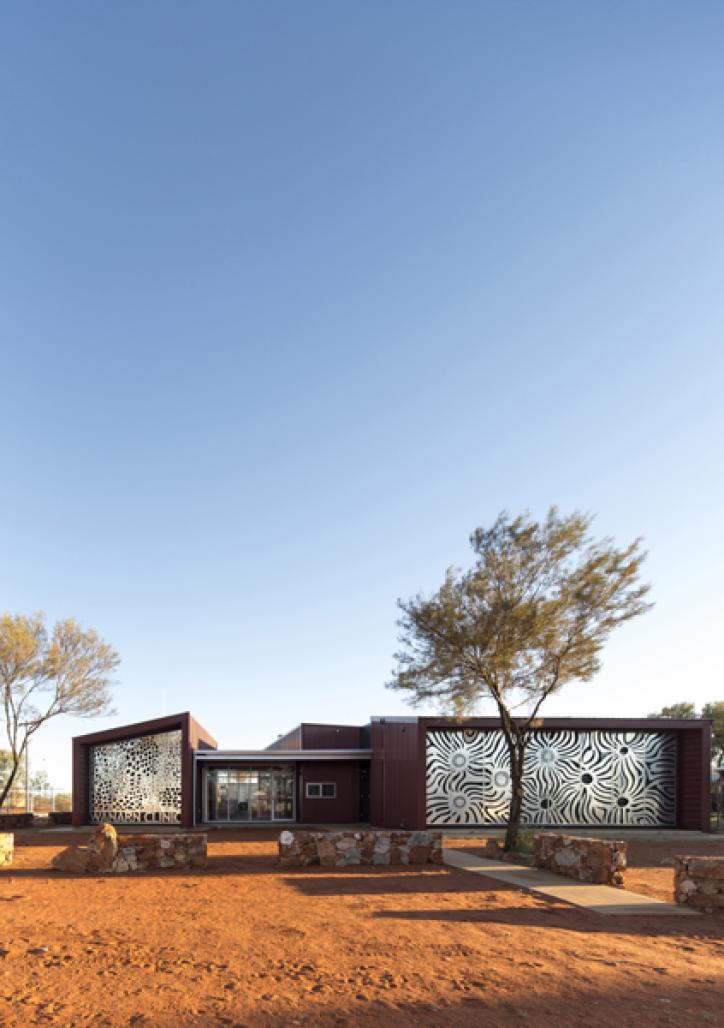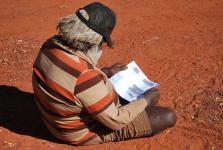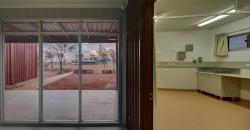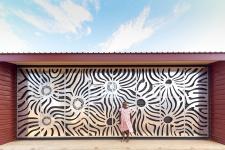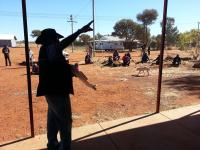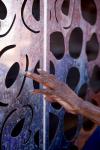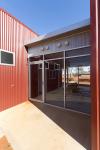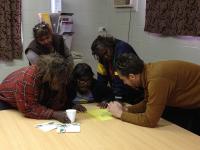In the Gibson Desert, 1000km west of Alice Springs Wanarn Clinic serves a community among the remotest in Australia. Ngaanyatjarra Health Service, a community organisation with an indigenous board, required a clinic which addressed the programmatic constraints and modest budget through respect of people, land and culture to create a facility with community ownership.
The design process was underpinned by the architect living in the community through the design process, facilitating iterative consultation with the community and specific user groups. Importantly it enabled impromptu yarning, under a tree, on the way to the shop or whilst hunting rabbit. This enabled all voices to be heard from a nomadic culture that is not always comfortable speaking within the mob. The result is a hundred small things that have enriched the architecture by making it subtly more appropriate to place and culture.
The outcome is a desert building not tied to colonial paradigms to address the harsh climate. Instead the monolithic forms of the building, which articulate the main functions, form crisp edges against the big sky.
Not least are the local stone walls and art screens, integrating the building into the landscape. The art screens counter the utilitarian built environment which gives no inkling of the extraordinary art that is so often created for the pleasure of others. Their incorporation enables the building to pay respect to elders, artists and culture, enriching the community. The stone walls were build by local indigenous workers from locally collected stone. They create a connection to country and facilitate outdoor meeting and waiting around the clinic.
Perhaps most importantly significant cost savings led to an increased health provision including a dialysis facility. Renal failure is an epidemic and means elders and traditional owners must leave remote communities for treatment, often never to return. This seriously damages cultural and social cohesion in the community, and inevitably its long term viability.
"The public and cultural benefit of the health provision cannot be overstated, including renal dialysis which was only possible through careful cost savings. Hundreds have been lost and now those elders who remain can be brought home to the remotest of locations." Brett Cowling, the client. This enables continuation of cultural and traditional land ownership.
2012
2015
This 250m2 community health clinic will serves a community of 150 people as well as an aged care facility.
The building is constructed of lightweight steel frame and colorbond zincalume cladding. The two smallest blocks of the building were prefabricated 1000km away in Alice Springs. The art screens are laser cut from 3mm galvanised steel and the stone walls were built from locally collected stone.
The original budget of $1,857,000 excluded renal dialysis. The final build cost was $1,600,000 including a two chair renal dialysis facility. Further cost savings facilitated additional equipment.
Client: Ngaanyatjarra Health Service
Funder: Australian Government, Office of Aboriginal and Torres Strait Islander Health
Client Agent: Parsons Brinckerhoff
Architect / Prject Manager: Kaunitz Yeung Architecture
Community Facilitation: Mrs Merideth, Mr Newberry, Mr Smith
Structural Engineer: Chapman Huchison
Quantity Surveyor: QS Sevices
Services Engineers: LUCID Consulting Engineers
